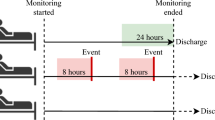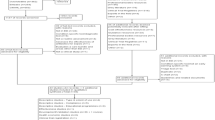Abstract
Introduction: High-resolution, artefact-free and accurately annotated physiological data are desirable in patients with brain injury both to inform clinical decision-making and for intelligent analysis of the data in applications such as predictive modelling. We have quantified the quality of annotation surrounding artefactual events and propose a factorial switching linear dynamical systems (FSLDS) approach to automatically detect artefact in physiological data collected in the neurological intensive care unit (NICU). Methods: Retrospective analysis of the BrainIT data set to discover potential hypotensive events corrupted by artefact and identify the annotation of associated clinical interventions. Training of an FSLDS model on clinician-annotated artefactual events in five patients with severe traumatic brain injury. Results: In a subset of 187 patients in the BrainIT database, 26.5 % of potential hypotensive events were abandoned because of artefactual data. Only 30 % of these episodes could be attributed to an annotated clinical intervention. As assessed by the area under the receiver operating characteristic curve metric, FSLDS model performance in automatically identifying the events of blood sampling, arterial line dam** and patient handling was 0.978, 0.987 and 0.765, respectively. Discussion: The influence of artefact on physiological data collected in the NICU is a significant problem. This pilot study using an FSLDS approach shows real promise and is under further development.
Access this chapter
Tax calculation will be finalised at checkout
Purchases are for personal use only
Similar content being viewed by others
References
Donald R, Howells T, Piper I et al (2012) Early warning of EUSIG-defined hypotensive events using a Bayesian Artificial Neural Network. Acta Neurochir Suppl 114:39–44
Guiza F, Depreitere B, Piper I, Van den Berghe G, Meyfroidt G (2013) Novel methods to predict increased intracranial pressure during intensive care and long-term neurologic outcome after traumatic brain injury: development and validation in a multicenter dataset. Crit Care Med 41:554–564
Marmarou A, Anderson RL, Ward JD et al (1991) Impact of ICP instability and hypotension on outcome in patients with severe head trauma. J Neurosurg 75:S59–S66
McHugh GS, Engel DC, Butcher I et al (2007) Prognostic value of secondary insults in traumatic brain injury: results from the IMPACT study. J Neurotrauma 24:287–293
Piper I, Citerio G, Chambers I et al (2003) The BrainIT group: concept and core dataset definition. Acta Neurochir (Wien) 145:615–628, discussion 28–29
Quinn JA, Williams CK, McIntosh N (2009) Factorial switching linear dynamical systems applied to physiological condition monitoring. IEEE Trans Pattern Anal Mach Intell 31:1537–1551
Acknowledgements
The authors would like to acknowledge the work of the BrainIT group of investigators and participating centres in the BrainIT data set. CH and IP are supported by a grant from the National Institute of Academic Anaesthesia. As stated above, funding from the Chief Scientist Office (Scotland) is supporting the further development of this work.
Conflicts of Interest
The authors declare that they have no conflicts of interest.
Author information
Authors and Affiliations
Corresponding author
Editor information
Editors and Affiliations
Rights and permissions
Copyright information
© 2016 Springer International Publishing Switzerland
About this chapter
Cite this chapter
Georgatzis, K. et al. (2016). Artefact in Physiological Data Collected from Patients with Brain Injury: Quantifying the Problem and Providing a Solution Using a Factorial Switching Linear Dynamical Systems Approach. In: Ang, BT. (eds) Intracranial Pressure and Brain Monitoring XV. Acta Neurochirurgica Supplement, vol 122. Springer, Cham. https://doi.org/10.1007/978-3-319-22533-3_60
Download citation
DOI: https://doi.org/10.1007/978-3-319-22533-3_60
Publisher Name: Springer, Cham
Print ISBN: 978-3-319-22532-6
Online ISBN: 978-3-319-22533-3
eBook Packages: MedicineMedicine (R0)




